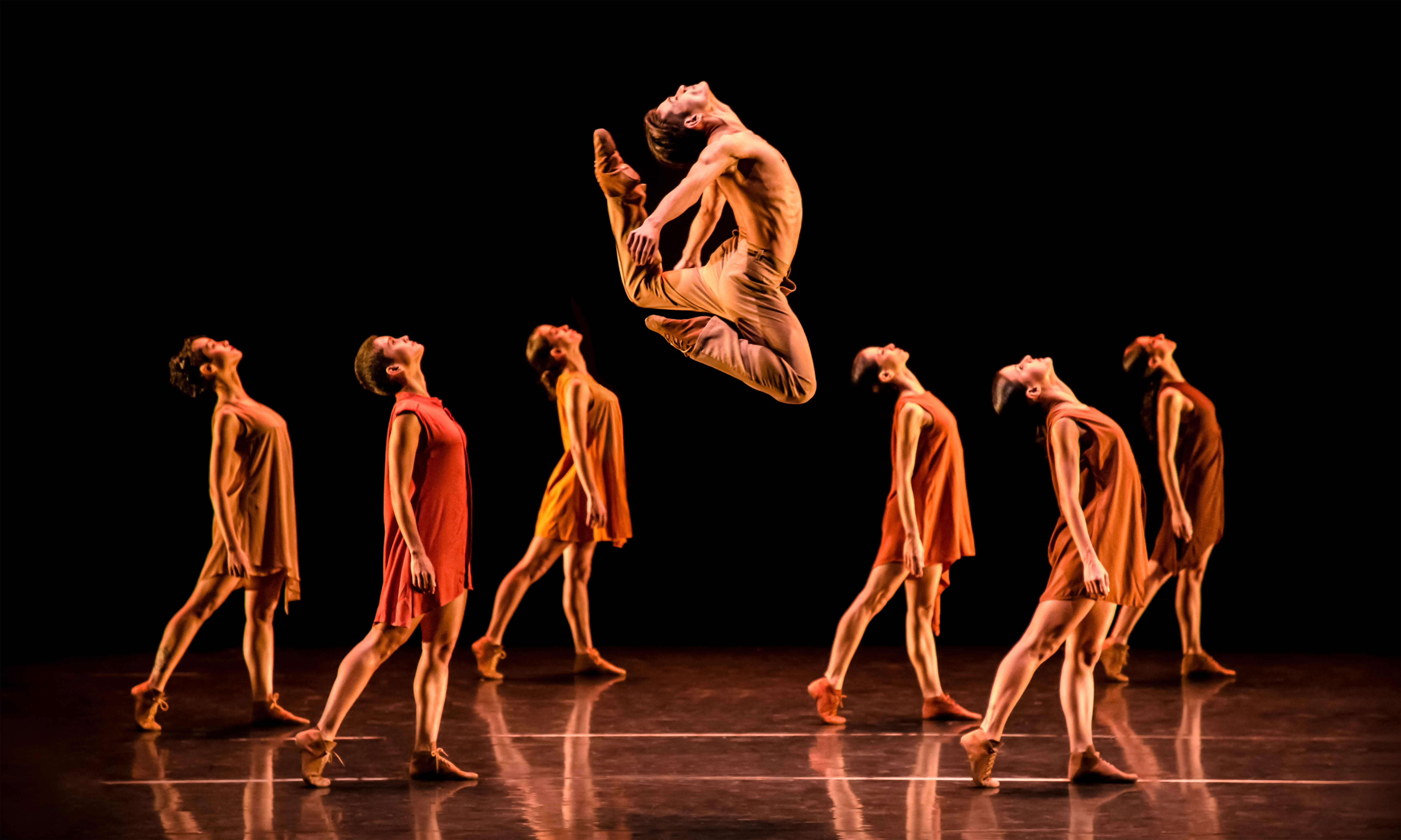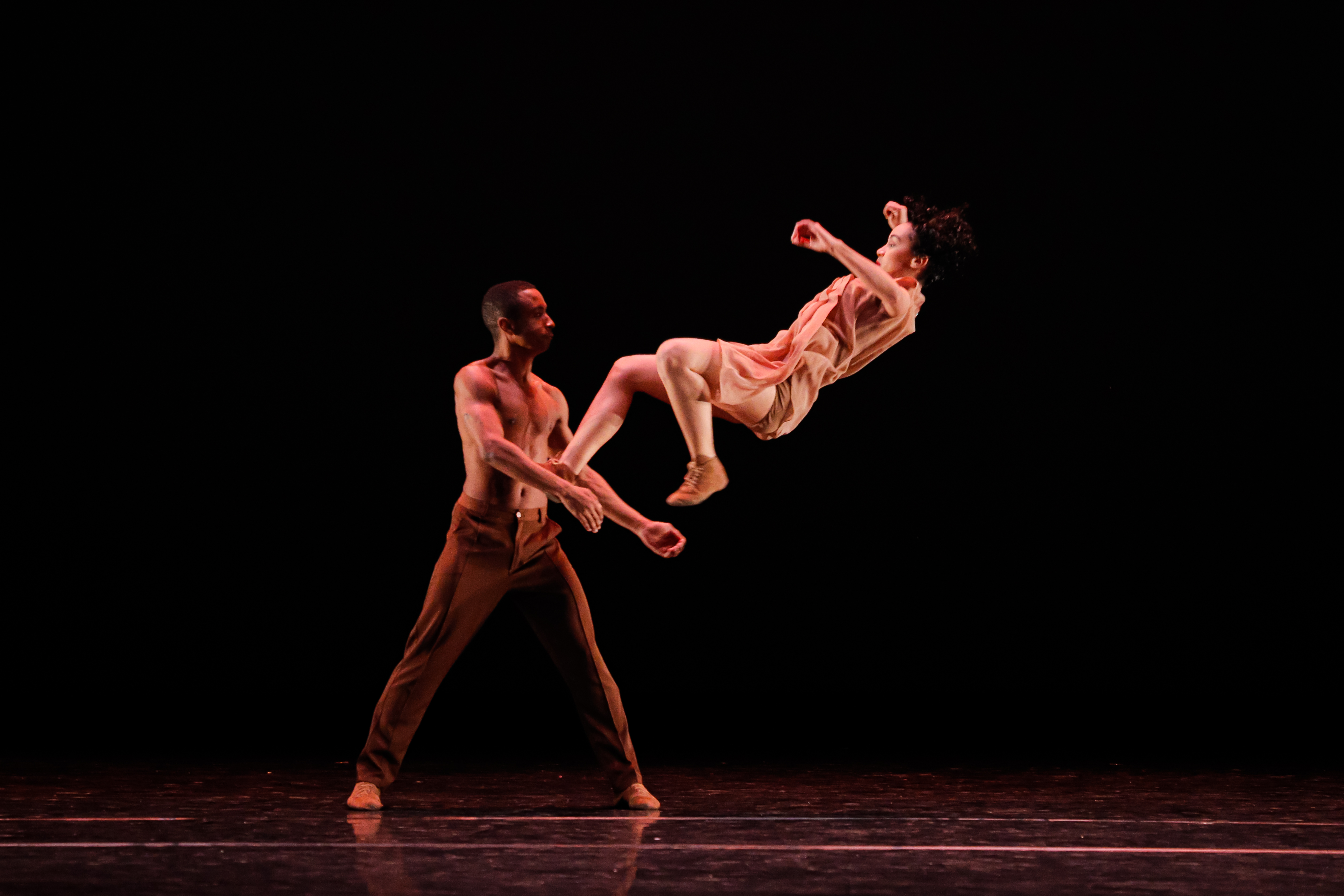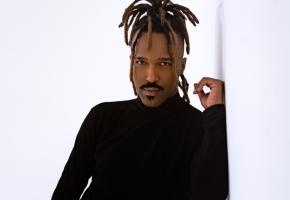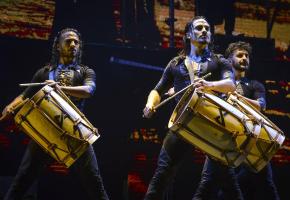The performance consists of three pieces, and lasts an hour and a half. It opens with the Anthem, which, according to the company’s description, “reflects on life cycles and collective identities”, and as an audience member felt like an intense induction into an experimental world of expression. This is followed by an interval, and then the audience re-congregates for Gnawa, a somewhat hypnotic viewing experience and quite necessary palate cleanser. After a three minute pause, the show finishes with Agora, a colourful, rhythmic finale.
In Goyo Montero's Anthem, a group of dancers move sporadically and combatively, with individuals breaking out for moments of expression before rejoining the writhing collective. “We have songs that connect us”, artistic director Inês Bogéa says, and the piece does speak to a sense of interdependence and bonding between the dancers, though this largely feels sinister and militaristic. “At the end,” explains Bogéa, “there’s a hope that as humanity we can find a way to live together”. Looking back at the piece through this lens, the hints of this journey and this message which came through watching it feel clarified, but sat in the theatre, all I really felt was overwhelmed.
The second piece, Nacho Duato's Gnawa, also was something of a blur. It was a more agreeable viewing experience: the interval allowed some decompression time, and whilst Anthem was set to grating music including a section made up entirely of live and recorded screaming, the soundscape of Gnawa was comparatively relaxed. And whilst Anthem felt long because it was intense, Gnawa felt long for the inverse reason. Not a lot happened, and little felt pertinent or memorable.
The three minute pause before Cassi Abranches' Agora started threw many people off - it seemed like the end, and quite a significant portion of the audience left the theatre. The final piece was the most accessible, I felt, and the most enjoyable to watch as a result. Where Anthem was mechanical and abrasive, Agora was fluid and easy. There was colourful, flowing fabric and dynamic rhythm as opposed to faux-nude bodysuits and guttural shrieks. It was, in short, pleasant. That said, as with Gnawa, it didn’t leave a particularly strong impression. By the time it ended, I was very ready.

What’s clear from conversation and reading — but crucially, not from the performance itself — is artistic vision. In the provided abstracts available on each piece, the creative intentions feel somewhat articulated, and in interview with artistic director Inês Bogéa, this is elucidated further. Where the show falls short is in communicating its vision. The execution and the clarity simply are not what they could be. Of course, in some cases, this would hardly matter. Beautiful dance would be beautiful dance, and the value would be in the aesthetic and technical appreciation as opposed to residing in comprehension of deeper meaning. Unfortunately, in this case, it is a significant flaw: the dance is not exactly beautiful, and definitely cannot be carried by that alone. The stage palpitates with the anguish of being misunderstood. The cognitive dissonance between the audience and the performance is too vast to overcome.
As advice to prospective ticket-buyers, I would recommend having a good think about what it is you are looking for. If dance is a medium that you find especially communicative and profound, this show may resonate: the cast is clearly talented, and the creative team is clearly passionate. If you speak the language, I am sure it has something interesting to say. However, if you’re looking for uncomplicated entertainment, this isn’t your show. If you’re looking for something relaxing, or beautiful, or particularly coherent, you may want to try elsewhere. I so wanted to enjoy this more than I did, but ultimately, the breakdown between intention and execution was too extreme.
Sao Paulo Dance Company is touring Dance Consortium venues until the 23rd of March. For more information, click here

















